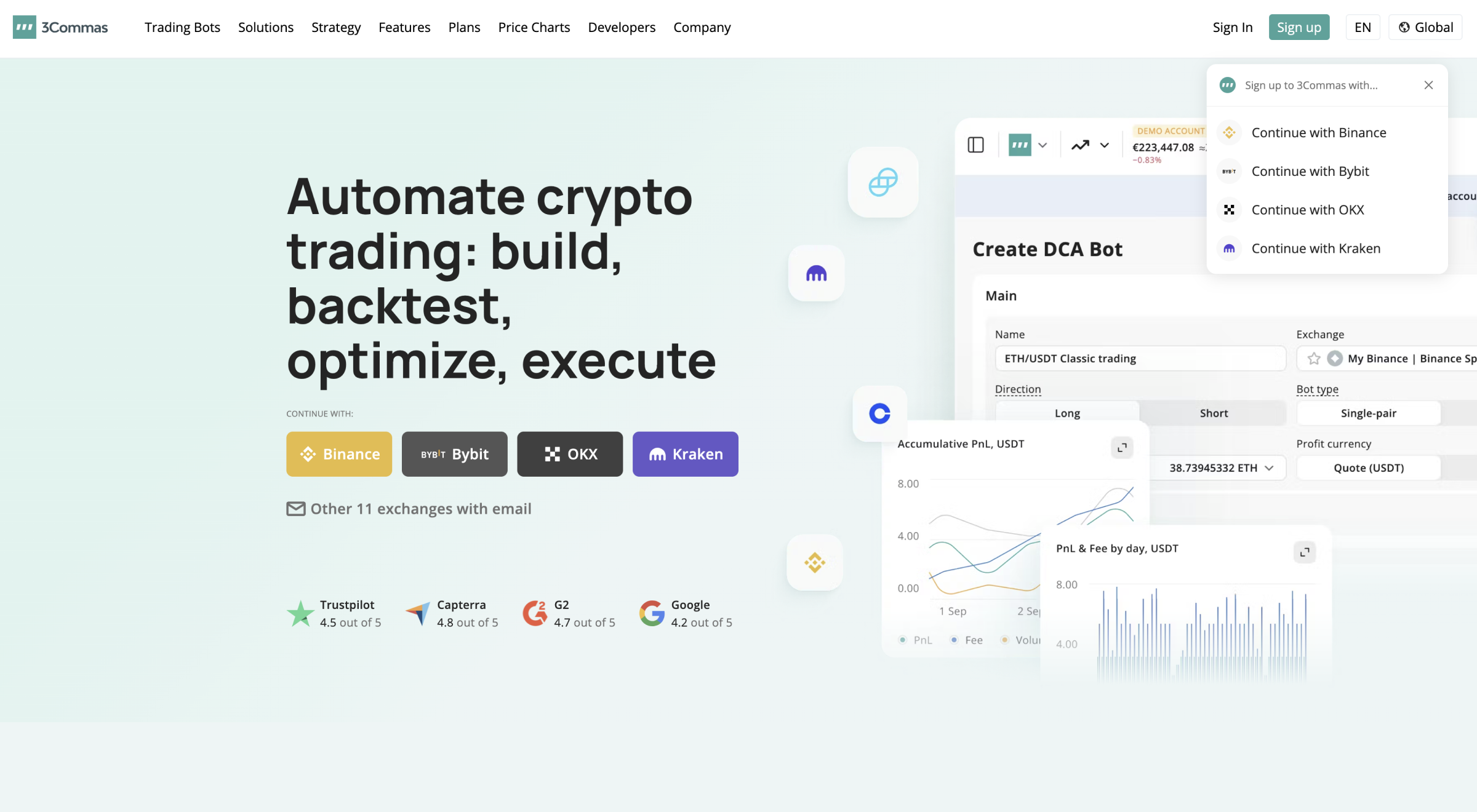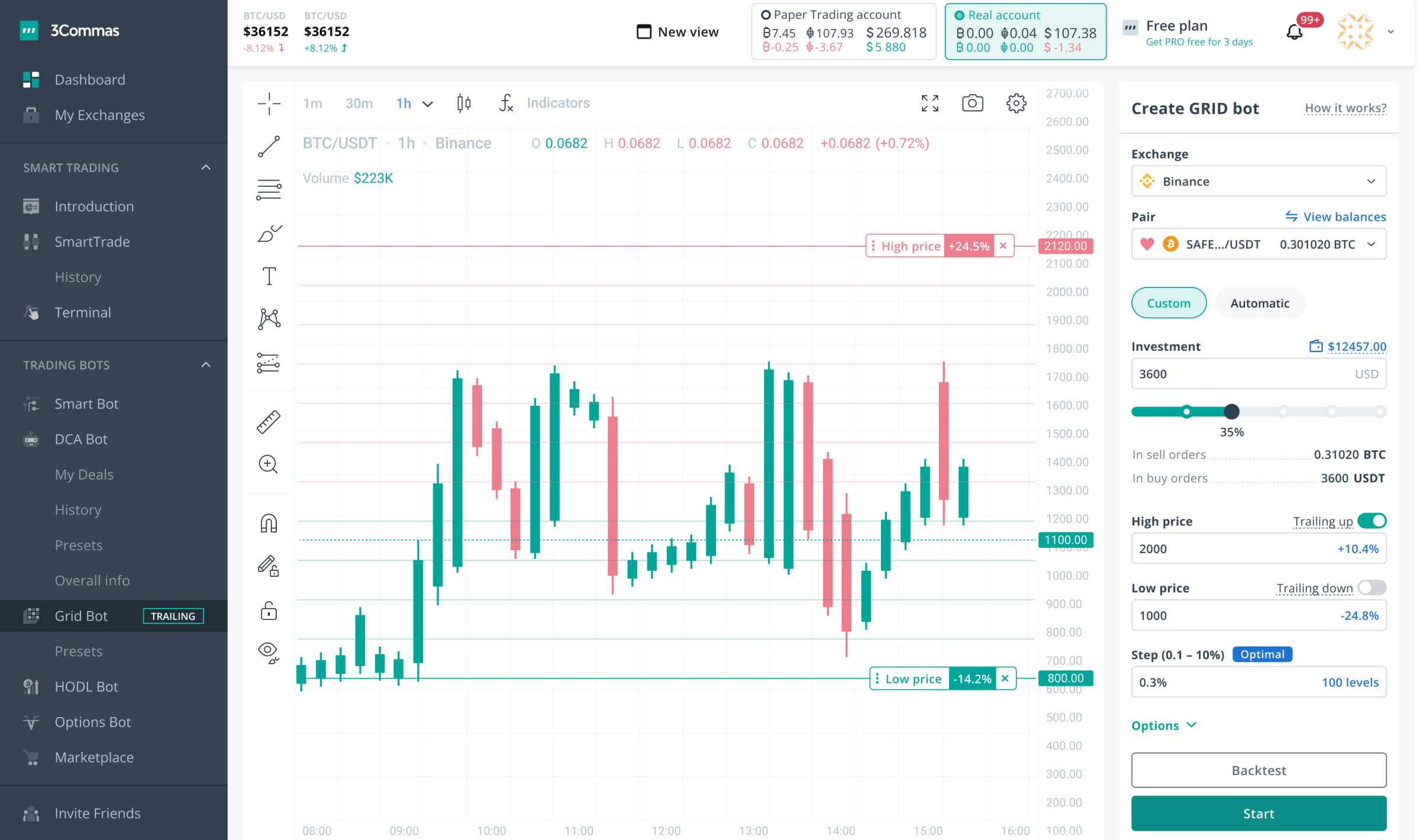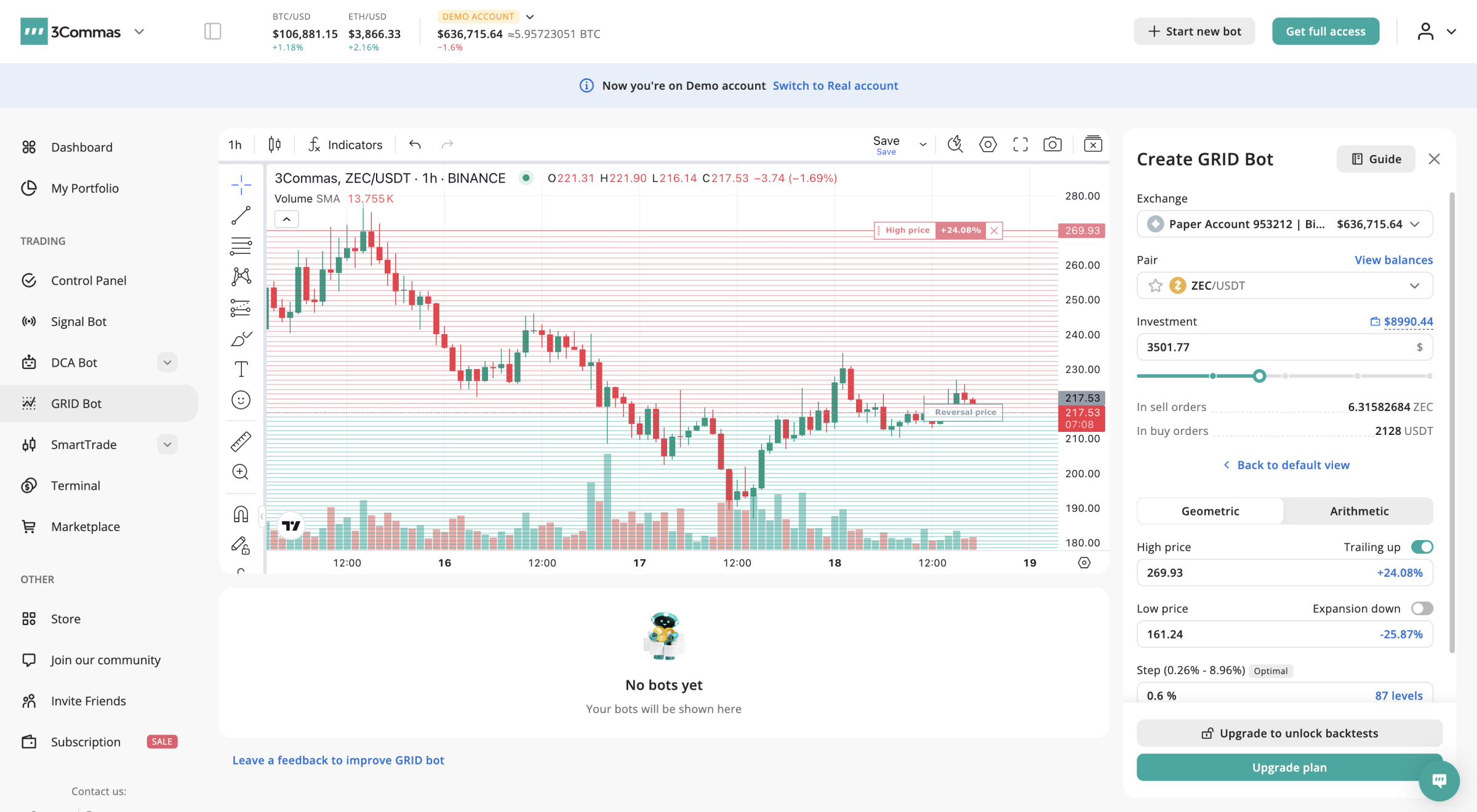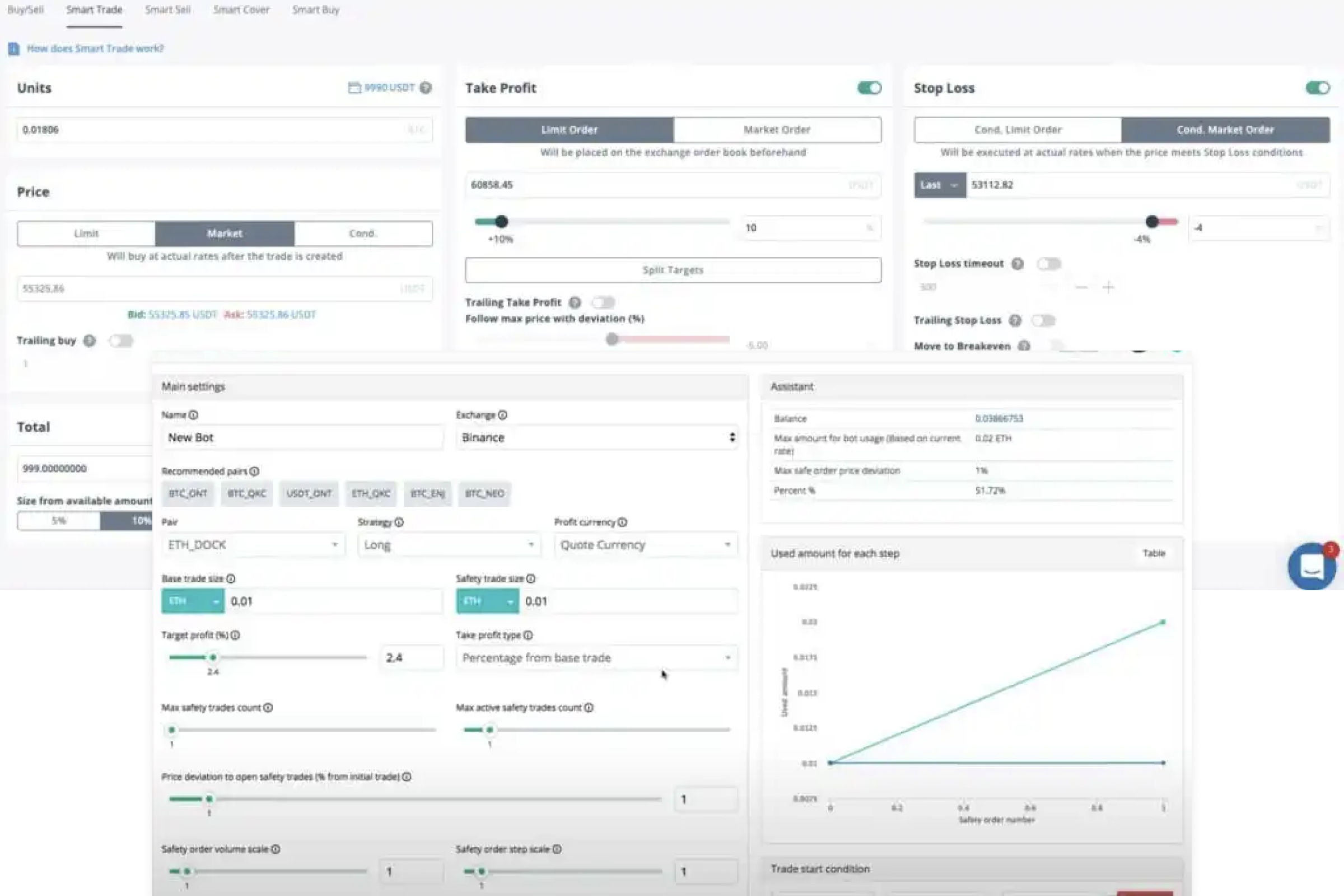
Introduction
When I first took on the redesign of 3Commas, the product was already technologically mature but visually overloaded. It had a powerful infrastructure for automated trading — GRID bots, DCA algorithms, strategy marketplace — yet it was losing user trust. Everything looked as if a person was managing something incomprehensible, almost mystical. The interface was not a helper, but a wall of parameters and tables.
My goal was to restore the user's sense of control. To make the interface not just a tool, but a visual explanation of what's happening.
The Problem
Most traders didn't understand how the bots worked. After pressing "Start," something opaque happened. People couldn't see where the bot opens trades, why it averages positions, where it takes profits. Even experienced users felt that the system lived its own life.
The GRID bot looked like a table of numbers. DCA — like a form without logic. The strategy marketplace — like a chaotic catalog without trust. Users couldn't see the meaning — and left.
How We Rethought GRID
GRID Bot1 is the core of all automation. Its idea is simple: the bot builds a grid of orders between specified levels and trades within the range. But visually, users couldn't see this grid. It existed only as numbers and calculations, so the entire power of the idea was lost.
We decided to show the mechanics. I created a visual model where each order became a line on the chart. The user moves a level — and sees how the GRID, range, and potential profit change. We added real-time trade simulation: the bot shows how it will act when the price moves. This removed the main barrier — fear of the unknown.
The entire setup now consists of three logical layers.
First — configuration. A minimalist panel with range, number of orders, and strategy type. Everything is visualized directly on the chart.
Second — simulation. Each parameter updates the grid in real-time, and the chart shows hypothetical entry and exit points. The user understands what's happening without reading the help.
Third — monitoring. After launch, the bot becomes a live dashboard: profit from each trade is visible, active orders, and range dynamics.
The main challenge was to unite two audiences: beginners and experienced traders. We created strategy templates — Conservative, Balanced, and Aggressive — that can be used "as is" or expanded and manually modified. This lowered the entry barrier for beginners while preserving flexibility for professionals.
GRID transformed from a parameter table into an understandable tool where visualization works as a language of explanation.

Before: GRID interface was just a table of parameters

After: Visual GRID representation with real-time simulation
DCA
Rethinking GRID became the foundation for updating DCA Bot2. In DCA, we used the same principle of visual feedback — a smooth averaging curve showing where and why the bot adds positions. This made the mechanics predictable and understandable.

Before: DCA interface without visual feedback

After: DCA with visual averaging curve showing where and why bot adds positions
Process
The work began with user interviews. We asked not "what don't you like," but "at what moment do you lose confidence." Almost all answers boiled down to one thing: the interface doesn't provide understanding. After that, we built prototypes in Figma, tested each screen, and listened to feedback.
I removed everything that didn't help a person make a decision. We simplified terms, reduced step structure, and made graphic elements interactive. At each stage, I asked myself one question: does the user understand what will happen if they press "Start"?
When the answer became "yes," the design could be launched.
Results
After launching the updated GRID and DCA modules, the product changed not only externally — user behavior changed.
| Metric | Before | After | Change |
|---|---|---|---|
| Completed bot setups | ~52% | 87% | +35 pts |
| Average setup time | 4m 20s | 2m 35s | -40% |
| Trading volume (GRID + DCA) | - | +27% | growth after launch |
| Active bots | - | x2 | doubled users |
| "I understand what my bot does" | 38% | 72% | +34 pts |
Results dashboard showing the impact of design improvements on user behavior
What Changed
Most importantly — people stopped being afraid of automation. They started launching multiple grids, experimenting, testing strategies, and sharing their ideas in the marketplace.
GRID became not just a tool, but a learning interface. Users don't read manuals — they understand the mechanics because they can see it.
Final Conclusion
This project proved a simple truth: design doesn't just decorate technology — it makes it understandable and alive. GRID became the visual language of automated trading, DCA — its predictable rhythm.
3Commas ceased to be a set of tools. It became a transparent system where humans control automation, not the other way around.
And in this, perhaps, lies the true power of product design — to turn complexity into confidence.
Key Terms
GRID Bot — An automated trading strategy that places buy and sell orders at predetermined price levels, creating a grid pattern. The bot profits from price fluctuations within the specified range by buying low and selling high repeatedly.
DCA Bot (Dollar Cost Averaging) — An automated trading strategy that systematically invests a fixed amount at regular intervals, regardless of price. This approach reduces the impact of volatility by spreading purchases over time, potentially lowering the average cost per unit.

